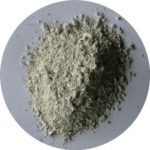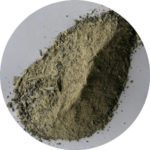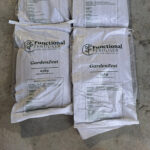Many areas have received insufficient rain for strong growth before the middle of May, which means there’s little time left before the winter slow growth period sets in.
The question often asked is whether compensatory growth is likely during winter. While soil temperatures are less than 10 degrees, and that is easily measured, pasture growth will be modest.
There are likely to be brief periods during June and July when a little extra growth occurs. Warm wet conditions will provide some encouragement, however it’s not until early September that sustained growth will occur.
People have talked of a green drought this autumn. Pastures have looked as though they ought to be growing and sufficient plants have recovered yet there’s not a lot happening.
The reason is that full breakdown, or digestion, of the dung, old root matter, and litter on the soil surface has not occurred.
That work is done by beneficial soil life, fungi, bacteria, earthworms and a myriad of others. There has been insufficient moisture and time for that to take place.
Over winter that digestion process will continue, and when soil temperatures reach 10 degrees plus, accompanied by bright sunny days there will be a release of nitrogen from soil organic matter and strong spring growth will rapidly follow.
The strongest growth will be evident on properties that have applied little or no fertiliser nitrogen. Although applied nitrogen may provide a burst of growth now it is at the expense of growth later.
The growth lost is in early spring when the feed deficit is greatest which will have to be covered by more expensive bought in feed, and the benefit already gained is largely if not totally negated.
Nature always wins in the long term, and nitrogen for permanent grazed pastures is always best when provided via clover.
There’s a school of thought gaining popularity at present that nutrient provided by fertiliser is unnecessary and with the right mix of pasture species and grazing management applied nutrient, particularly phosphorus and sulphur, will become obsolete.
That flies in the face of the decades of work by dedicated scientists at research institutes throughout the country prior to fertiliser practises being dominated by information and products provided by superphosphate manufacturers.
Taking the view that all of the work carried out by DSIR , much of it on different species and soil biology, is no longer relevant suggests either supreme arrogance, or more likely a lack of a basic understanding of soil, plant, or animal requirements.
Nitrogen, an essential plant requirement, is provided by either bacteria in conjunction with clover, or fertiliser. It is nitrogen provided by urea that is the recent experiment, one that is rapidly drawing to a close as the consequences become increasingly apparent.
The late Professor Tom Walker of Lincoln University was often quoted as stating that any farmer could grow grass, it took a special farmer to grow clover.
Prior to urea largely replacing nitrogen fixed by clover, permanent grazed pastures regularly grew 18 tonne of dry matter per hectare annually.
Data from DairyNZ and others indicates that 14 tonne in an excellent growing season is now the norm, as much as a 22% decrease, with a loss of both energy and protein as a natural consequence.
However, there is a resurgence of interest in both the soil fertility and pasture management practises required to return to profitable low-cost permanent grazed pastures.
Fortunately, there’s a group of highly skilled farmers for whom these practises are second nature, ready to share their insight and expertise.
Winter is the time to research and find out more about products and practises that will increase total production, markedly reduce costs, as well as meet the soon to be mandated environmental standards.
For more information talk to Peter Burton, 0800 843 809




